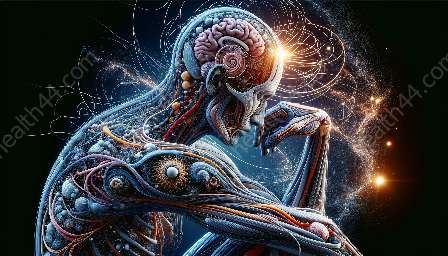Understanding dental anatomy is crucial for individuals in the field of health education and medical training as it provides a comprehensive knowledge of the oral structures and their relevant roles.
The Significance of Dental Anatomy
Dental anatomy is a specialized branch of anatomy that focuses on the structure and function of the teeth and oral structures. It plays a crucial role in health education and medical training as it provides insights into the morphology, development, and various characteristics of teeth.
Correlation with General Anatomy
Dental anatomy is closely correlated with general anatomy, especially the study of the head and neck region. Understanding dental anatomy requires knowledge of the craniofacial structures, including bones, muscles, nerves, and blood vessels that contribute to the function and maintenance of the oral cavity.
Overview of Dental Anatomy
Dental anatomy encompasses the study of the various types of teeth, their internal and external structures, as well as the supportive tissues, such as periodontium, which includes the gums, alveolar bone, and periodontal ligament.
Types of Teeth
The human dentition consists of different types of teeth, including incisors, canines, premolars, and molars, each with specific functions in chewing and grinding food.
Tooth Structure
The structure of a tooth comprises the crown, neck, and root. The crown is the visible part covered with enamel, the neck is the part at the gumline, and the root anchors the tooth in the jawbone.
Supportive Tissues
The periodontium supports the teeth and is crucial for maintaining their stability and health. Understanding the anatomy of the periodontium is essential for dental professionals in diagnosing and treating various oral diseases and conditions.
Importance in Health Education and Medical Training
Professionals in health education and medical training must possess a thorough understanding of dental anatomy to effectively diagnose and treat oral health conditions. They require knowledge of tooth development, eruption patterns, occlusion, and dental diseases.
Tooth Development
Dental students and professionals study the development of teeth from their formation in the embryonic stage to their eruption in the oral cavity. Understanding the stages of tooth development aids in recognizing abnormalities and anomalies.
Occlusion
Occlusion refers to the alignment and contact between the upper and lower teeth when the jaws are closed. Proper occlusion is essential for chewing and speaking, and its study is integral to dental anatomy and oral health.
Dental Diseases and Conditions
Health education and medical training involve the diagnosis and treatment of various dental diseases, such as dental caries, periodontal diseases, malocclusions, and oral infections. Knowledge of dental anatomy is indispensable for identifying the affected structures and providing appropriate care.
Interactive Learning and Training
Advances in technology have enabled interactive learning and training in dental anatomy. Virtual simulations, 3D models, and educational software facilitate a dynamic and engaging learning experience for students and professionals in the field.
Virtual Simulations
Virtual simulations allow individuals to explore the intricate details of dental anatomy in a virtual environment, providing an immersive learning experience that enhances conceptual understanding and retention.
3D Models
Three-dimensional models of teeth and oral structures enable students and professionals to visualize the intricate details of dental anatomy, promoting a deeper understanding of tooth morphology and spatial relationships.
Educational Software
Interactive educational software provides an engaging platform for learning dental anatomy. It offers features such as quizzes, interactive diagrams, and case studies that enhance the learning experience and assessment of knowledge.
Conclusion
Dental anatomy is a fundamental component of health education and medical training, offering insights into the structure and function of teeth and oral structures. Its correlation with general anatomy provides a holistic understanding of the craniofacial region and its relevance to overall health. As technology continues to advance, interactive learning tools further enrich the study of dental anatomy, ensuring that students and professionals are well-equipped to address the complexities of oral health.


